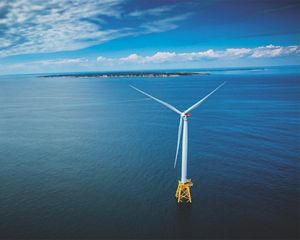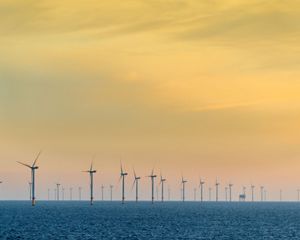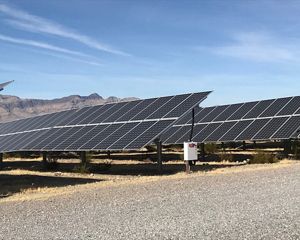Turbine Reefs: Designing Offshore Wind Power to Improve Habitat for Marine Life
The Nature Conservancy, working with other ocean experts, shows that opportunities for new reefs and clean energy go hand in hand.
Right now, there are only a handful of offshore wind turbines in U.S. state and federal waters. But by 2035, there will likely be more than 2,000 off the Atlantic coast alone. Of course, these turbines will be good for our climate and people. Together, they can generate enough renewable energy to power 10 million homes, reducing demand for the dangerous, fossil-fuel-burning power plants that are the United States’ second-largest source of carbon pollution. Add to that serious economic benefits: By decade’s end, the offshore wind power industry is expected to create 77,000 well-paying jobs.
Can Offshore Wind Turbines Help Marine Life?
TNC & Inspire Environmental found opportunity to create new fish habitat on wind turbines.
How We Did ItBut what if these turbines could do even more? What if the turbines’ design could also create valuable underwater habitat for fish and other marine life? Based on previous research, a group of ocean experts from The Nature Conservancy and outside researchers are working together to demonstrate this opportunity as they test and evaluate ways to optimize both marine habitat and clean energy during turbine construction.
“As we buildout offshore wind energy, there is great potential to enhance and create new fish habitat,” explains Carl LoBue, The Nature Conservancy’s New York oceans program director, who is involved in this collaboration. “With intentional design and material selection, these new structures could support entire communities of marine life.”
The Undersea World of Wind Turbines
When hard structures are put in the ocean, they often turn into artificial reefs. Oceanographers and others have observed how submerged shipwrecks and bridges can become home to wide and colorful arrays of marine species, as have the underwater portions of many offshore wind turbines in Europe, China and other parts of the globe.
Quote: Carl LoBue
As we buildout offshore wind energy, there is great potential to enhance and create new fish habitat. With intentional design and material selection, these new structures could support entire communities of marine life.
As offshore wind power development ramps up in the United States, scientists and advocates are exploring how a well-known biological principle—that complex habitat promotes diversity of wildlife—can apply in this new context. The idea of optimizing wind turbine bases so that they create places for fish and other marine life to thrive is a fairly new one; to date, engineers have designed solely for function and cost. Now, says Chris McGuire, The Nature Conservancy’s Massachusetts ocean program director, we and our partners are collaborating with engineers “to design for nature as well.”
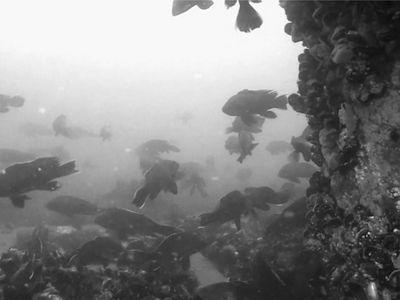
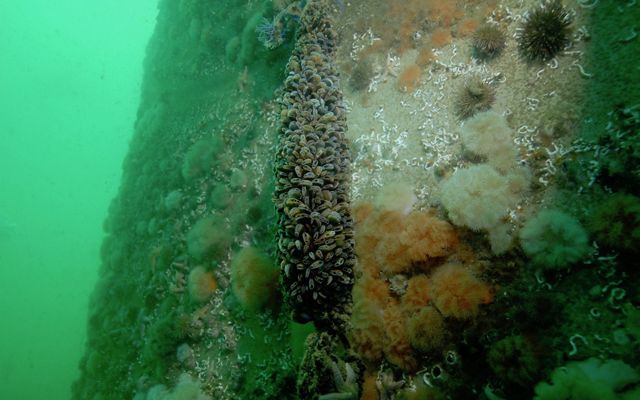
Growing in Place
If you’ve ever stood in the surf and felt the tide pull away the sand from around your feet, you’ll understand why offshore wind turbines need erosion protection at their bases. To date, heavy rocks the size of car tires have been used for this purpose. But TNC experts, seeing an opportunity to increase habitat, conducted research on which types and shapes of materials might increase biodiversity and compiled a catalogue of habitat-friendly, U.S.-made products they believe “can encourage a more diverse assemblage of marine life,” says Kate Wilke, fisheries scientist for The Nature Conservancy in Virginia.

This kind of habitat creation has shown promising results in restoration projects The Nature Conservancy has pursued in nearshore coastal waters around the world, she says. But the organization hasn’t yet attempted these techniques in deeper parts of the ocean. Nor have the various habitat enhancement options been tested against each other or against standard erosion protection. Wilke notes, “The question really is: How good can it be?”
To find out, TNC ocean experts and partners will track baseline conditions at turbines being installed off the Atlantic coast, and, later, examine how different types of materials and configurations attract various wildlife species and enable marine populations to grow.
While interest is high in the findings is high, the research itself is challenging. Traditional research methods are not precise enough, so The Nature Conservancy and Stony Brook University are conducting a new study to determine which combinations of existing and novel scientific monitoring methods are effective in detecting modest differences how fish and other marine life interact with different structures. The aim of this research is to better illuminate how artificial reefs can best attract and produce fish.
Field work will take place in 2024 at the Atlantic Beach Artificial Reef off of The Rockaways. Researchers will create analogous conditions to future offshore wind turbine sites to test which materials and designs would provide the best conditions to support diverse communities of marine life.
Offshore wind power is essential to limiting global warming and building healthy, safe and prosperous communities. Now, TNC experts believe, with the right designs, offshore wind turbines can help create habitat for fish and other marine life, too.
Want to learn more about turbine reefs?
Our Global media team will connect you with on-the-ground team members throughout the East Coast.

